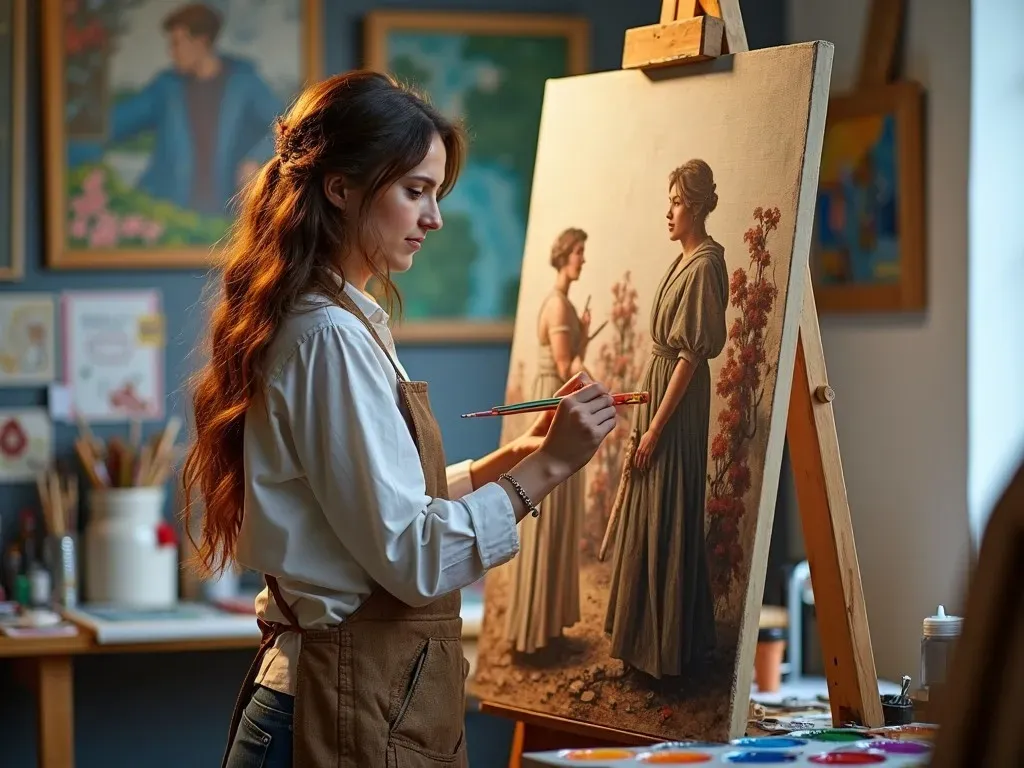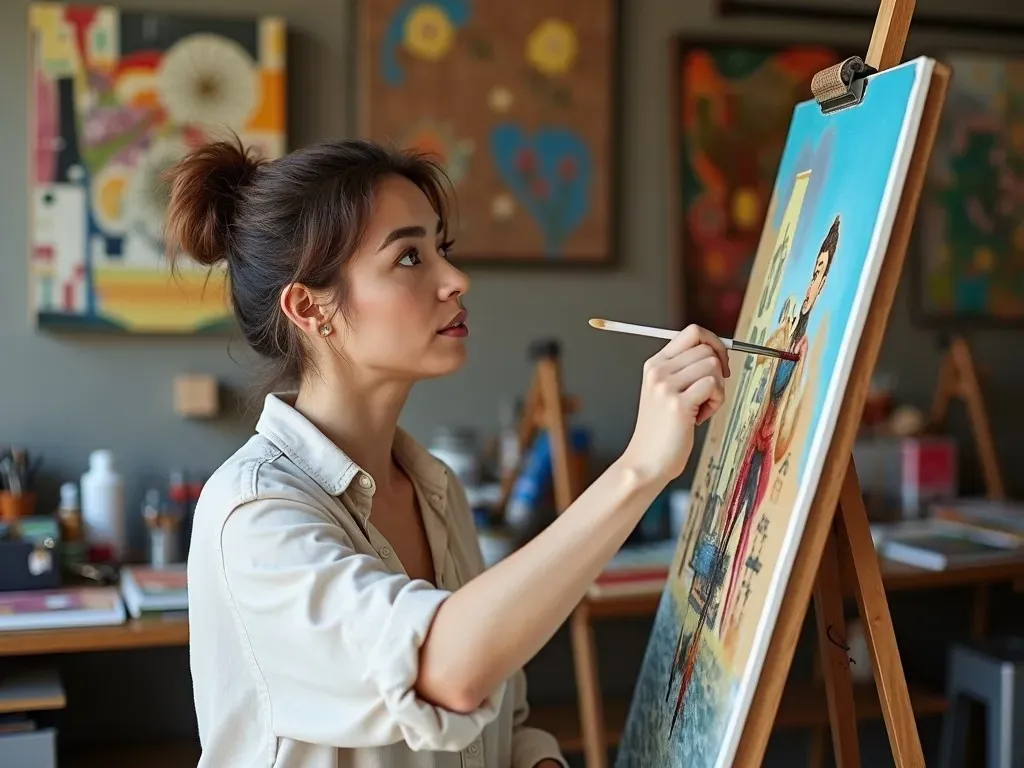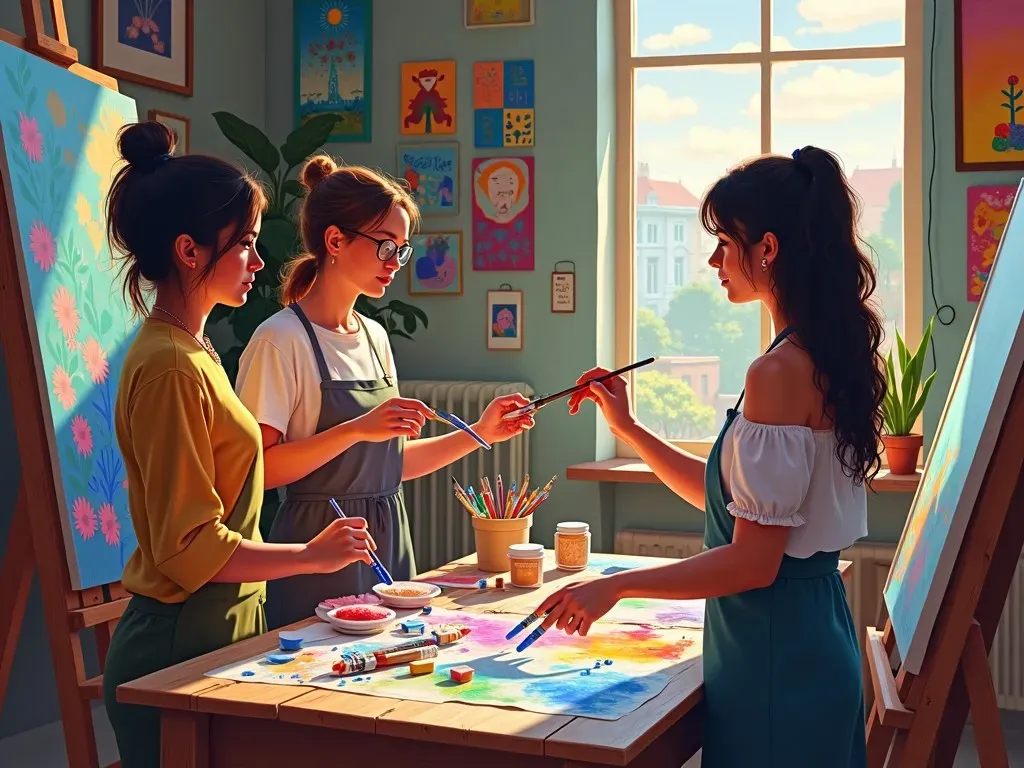The phrase "woman painting a picture" encapsulates not just the act of creation, but a deeper narrative about women’s roles in the art world throughout history. From renowned female artists like Frida Kahlo and Georgia O’Keeffe to the everyday woman expressing herself through painting, the image of a woman with a brush in hand carries with it layers of meaning, creativity, and empowerment.
Painting has historically been a domain where women have often been overshadowed, yet many have broken barriers to make significant contributions. This article explores the multifaceted dimensions of women painters, the evolution of their representation in art, and the importance of images of women painting in inspiring future generations.
The Historical Significance of Women in Art
Women have participated in visual arts for centuries, often as creators and muses. Here’s a brief overview of their roles:
| Time Period | Notable Women Artists | Contributions |
|---|---|---|
| Renaissance | Sofonisba Anguissola, Lavinia Fontana | Pioneered portrait painting |
| 19th Century | Camille Claudel, Berthe Morisot | Influenced Impressionism and sculpture |
| 20th Century | Georgia O’Keeffe, Frida Kahlo | Explored modernism, identity, and personal experience |
| Contemporary Era | Yayoi Kusama, Carrie Mae Weems | Transformed the dialogue around gender and race |

Women Portraits: A Timeless Theme
Portrait painting has a deep-rooted history with women both as subjects and artists. An important aspect of woman painting a picture is the portrayal of female subjects by female artists. This expression of identity and narrative can be seen in contemporary women portrait artists today who depict the complexities of womanhood.
- Frida Kahlo: Known for her intense self-portraits, Kahlo explored themes related to identity, postcolonialism, gender, and the human body in her works, providing a compelling narrative about the female experience.
- Yayoi Kusama: Although known for her installations, her portraiture adds a unique perspective on psychological abstraction, emphasizing the internal struggles women face.
- Cindy Sherman: Through self-portraiture, she interrogates stereotypes of women in society, blurring the lines between artist and subject.
Facts and Figures: Women in Contemporary Art
The current landscape of art and representation shows a considerable shift towards inclusivity. Below is a table highlighting women’s participation in contemporary art exhibitions:
| Year | Percentage of Female Artists Exhibited | Notable Exhibitions |
|---|---|---|
| 2017 | 37% | Venice Biennale |
| 2019 | 41% | Whitney Biennial |
| 2021 | 47% | Documenta 15 |
| 2023 | 52% | Arsenale, Venice |

The Artistic Process: Women’s Perspective
The process of painting serves not only as an artistic outlet but also as a means for women to express their thoughts, emotions, and societal roles. The act of a woman painting a picture can reflect her identity, societal expectations, and personal narratives. Many women artists cite empowerment through creative expression, especially in cultures that may limit their roles.
Popular Mediums Used by Women Artists
- Acrylics: Fast-drying and versatile, acrylic paints are favored by women artists who wish to explore spontaneity in their creations.
- Oils: Traditional oil painting allows for depth of color and texture, often found in classical works created by women.
- Mixed Media: Combining different materials and Techniques, mixed media has become popular as it allows women to incorporate various aspects of their identities and experiences.
Impact of Social Media on Women Artists
Social media platforms have significantly increased visibility for women artists. Instagram, in particular, has urged contemporary female artists to share their work with global audiences, connecting them with other creatives and buyers.
- Hashtags like #WomenInArt, #ArtGirl, and #FemaleArtists unite women painters from various backgrounds, allowing them to share their stories and gain recognition.
- Collaboration: Women are increasingly coming together for collaborative projects, breaking down barriers and redefining art spaces.
FAQs About Women Painting a Picture
What are some famous paintings by women artists?
- "The Dinner Party" by Judy Chicago – A celebration of women’s history.
- "Self Portrait with Thorn Necklace and Hummingbird" by Frida Kahlo – A powerful self-reflection.
- "No. 5" by Georgia O’Keeffe – An abstract floral representation.
How can I find images of women painting?
You can explore collections of images and photographs of women painting at various stock photo websites, such as Getty Images and Pexels. These resources provide high-quality images for use in projects or personal Inspiration.
Why is it important to represent women in art?
- Visibility: Representation helps empower future generations and challenges traditional gender norms.
- Diversity: It brings a wider spectrum of ideas and perspectives to the art world.
- Inspiration: Women artists serve as role models for aspiring creators, proving that artistic talent transcends gender.

The journey of women in painting art continues to evolve. Each brush stroke adds to a rich tapestry of creativity that challenges societal norms, celebrates diversity, and inspires future generations. The act of a woman painting a picture goes beyond mere canvas; it’s a powerful statement of identity, experience, and hope.
